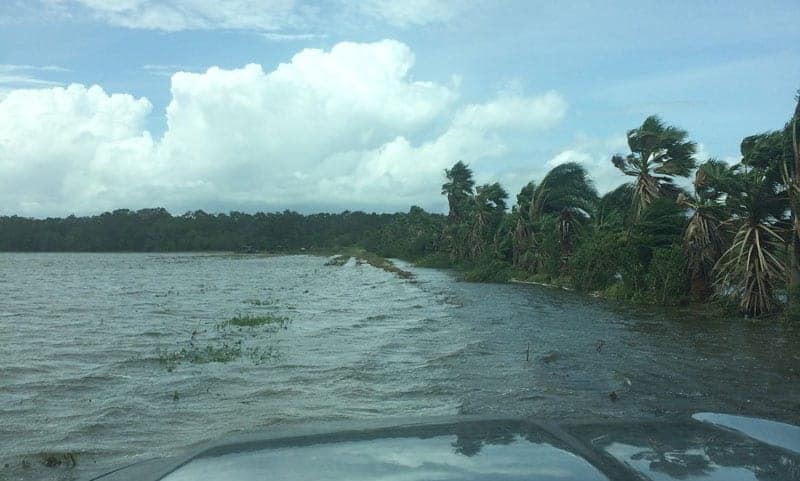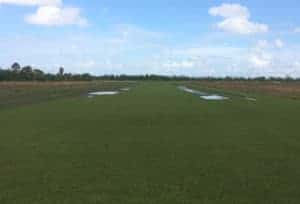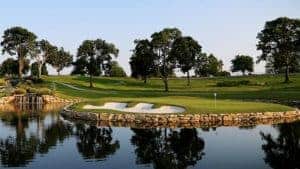Doug Carter drove up to his farm and couldn’t believe his eyes.
His sod farm fields were covered with 36-inches of standing water. In a two-day period, Fort Pierce, Florida, received nearly 16 inches of rain.
“I pulled in the gate and could not believe what I saw,” Carter said. “My farm was three feet under water. The whole farm.”
As the water receded after Hurricane Irma had cut a path of destruction through Florida, Carter noticed some of the grasses in his fields were damaged, but one was left unharmed. In the 12 days it took to pump out the water, the three acres of PremierPRO hybrid bermudagrass resurfaced with no damage whatsoever.
The farm is situated between cattle pasture lands and orange groves, which made it difficult to pump the standing water out because he was pumping for the adjacent properties as well. It took four days for Carter to isolate his farm from the neighboring properties to make any headway pumping out water.
“By day five I start panicking, I know I’ve lost everything, I know we aren’t gonna make it.” Carter said.
“This is my registered block, my money block, this is what I have to use to plant certified. Of course, I thought, I can’t even see it, it’s underwater.”

By day six, the turf farm was still submerged under two-feet of water. On day eight, the highest points of his fields, where he had planted Celebration and Tifway 419, started to surface, while other parts of the farm where PremierPRO was planted remained submerged for 12 days.
While Tifway 419 and Celebration bermudagrass suffered from severe water damage and set Carter back 15-60 days for production, PremierPRO was unharmed. PremierPRO was under water longer than Tifway 419 and Celebration, but due to its ability to survive in low oxygen conditions and hypoxic soils, it was able to withstand 12 days underwater, according to Dr. Milt Engelke, Professor Emeritus at Texas A&M and developer of PremierPRO.
“Within two weeks of the water receding, I could have harvested and sold every square foot of that PremierPRO block,” Carter said. “I was absolutely amazed, I could not believe it.”

Once the water was dried out enough, Carter said he sprayed the farm with fungicides. About another week after, he was able to run equipment out on the farm.
“By day eight or 10 we were spraying for fungus and disease, more as a precautionary thing any turf farmer would do,” Carter said. On the PremierPRO, he “sprayed one time since the hurricane event, and I haven’t had to spray again. And it’s beautiful.”
Based on PremierPRO’s recovery after Hurricane Irma, Carter is expanding his production of the grass to to more than 50 acres by spring.
“I think it’s capable of handling very wet conditions, capable of handling very dry conditions, it’s a much denser grass than some of the other bermudagrasses that are out there right now,” Carter said. “From what I’ve seen so far, in terms of the durability of it, nothing compares.”

